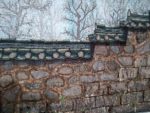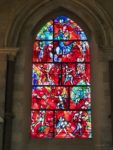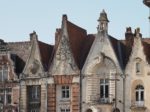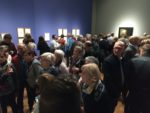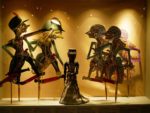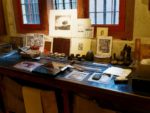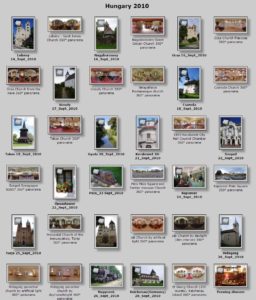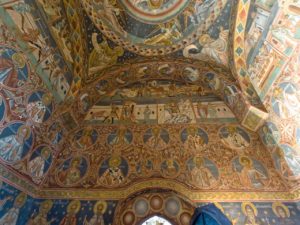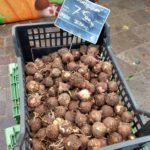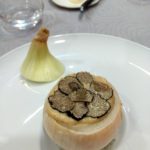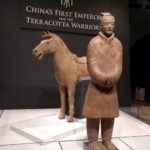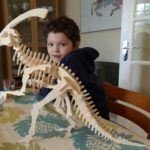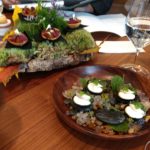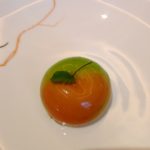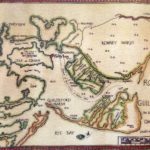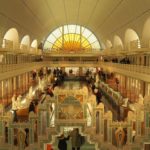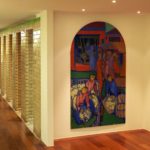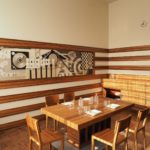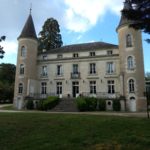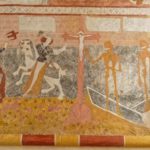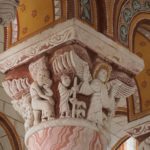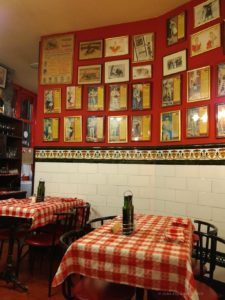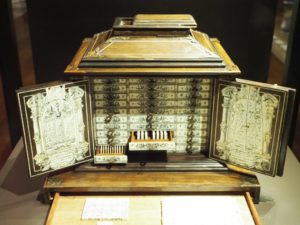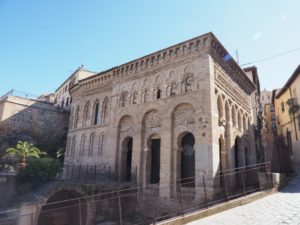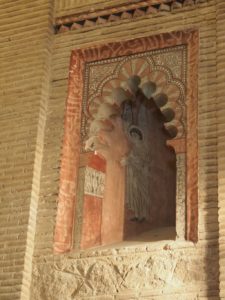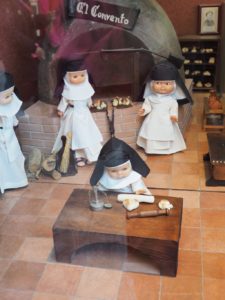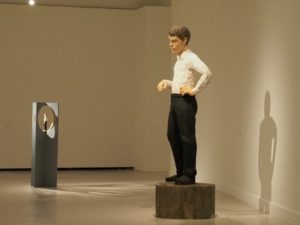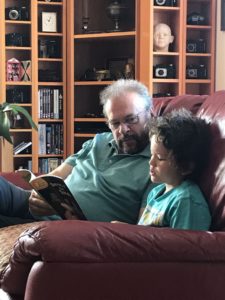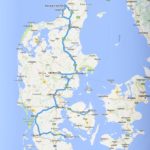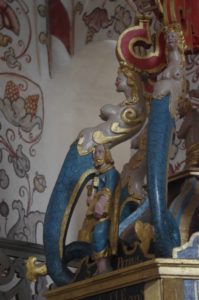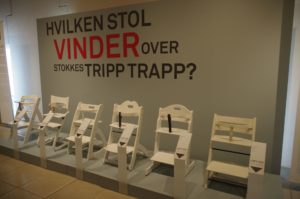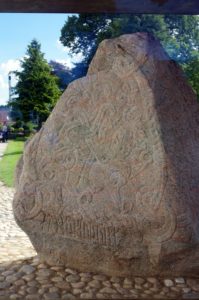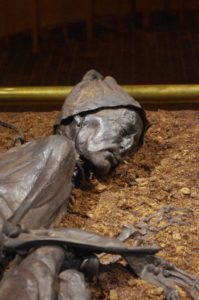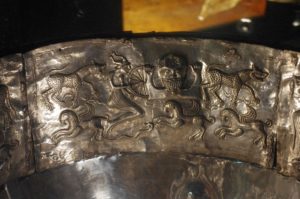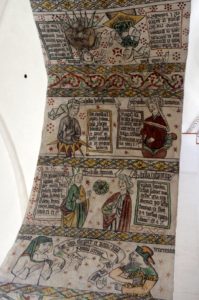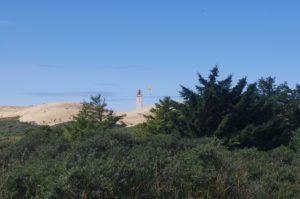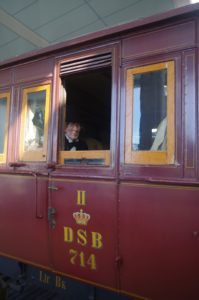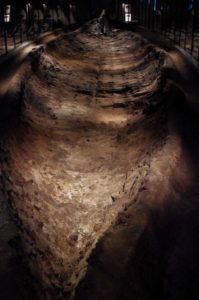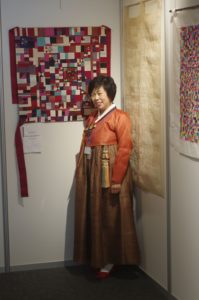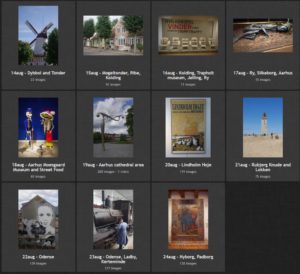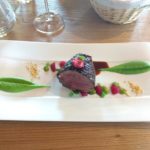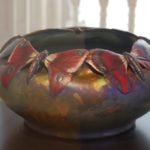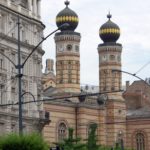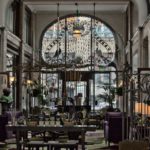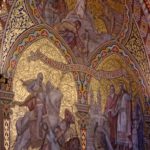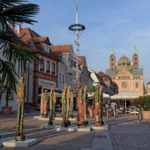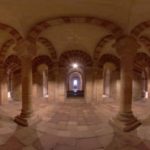To download a printable PDF version (no pictures)
click on this link E2E2018no4.pdf (nine A4 pages)
There is a comprehensive set of photographs:
Ireland July-August 2018
together with links to place photographs in the text
which usually go to the first of a sequence of photographs
There is an overview map of our route
and a more detailed map for each day in the photographs
With grandchildren back at school, the pensioners of the Vosges resume their social activities in September, including the Sainte Marguerite group who tax their brains fortnightly with word and number puzzles. And, like children at school, they start with the round-the-table question, “What did you do in the holidays?” Ireland and the Irish are highly esteemed round here (unlike perfidious Albion), so Helen’s report of our holiday in Ireland was very well received; so much so that her success in finding the longest word and even the dreaded number total were immediately attributed to the sharpening of wits in Ireland.
It is the friendliness, slower pace of life and the constant rain in Ireland that the French comment on, but Irish food (like English) does not get a French vote. We were to agree on most of that. But what we were also to realise was how woefully ignorant we were of Irish history, apart from words like Famine and Uprising. None of the 800 years of English political and military involvement in Ireland were mentioned in our history syllabus. And the only home discussions, which were more of diatribes, that Helen remembers from childhood were her Great Aunt Beatrice’s assertions that the Irish Catholics were trying to take over, witness their building of huge new schools in towns like Liverpool. How upset Great Aunt Trissie would have been if she knew that her great niece would work as school librarian for four years in a pleasant Catholic school in Nottingham, where the conversation at the beginning of term would be less about taking over than about the terrible Irish Sea crossings they just had endured on their way back from holidays with relatives.
Remembering their accounts all these years later, taking the fastest transport, the catamaran, sounded a good idea. But unfortunately catamarans are liable to cancellation when bad weather threatens. So instead of eating dinner in Dublin on Sunday evening, we arrived for a breakfast on Monday morning, having been reallocated to the 2.40am ferry boat. Our first encounter with Irish hospitality and good cheer was at our pleasant Georgian hotel, where all the cheerful and pleasant staff seemed to be east European girls with excellent English and local knowledge about bus services and restaurants. And, as with everyone else, their most frequent closing comment was, “You’re welcome”.
Bureaucracy never seemed to weigh too heavily with officials. And a pleasant young man whisked us in to the Book of Kells exhibition at a different day and time from our pre-booked ticket without batting an eyelid. “You’re welcome”.

Trinity College Library
Some years ago, Christopher de Hamel’s “Meetings with with remarkable manuscripts”, had perhaps raised expectations a bit too high. Whereas he had been escorted personally to a quiet room where the pages of the Book of Kells were turned for him to study for as long as he wished, we had to be content with a dimly lit room with a finger-print covered showcase surrounded by impatient tourists elbowing for the best view of two dull brown pages. The exhibition that preceded it was full of interesting details, however, as was a book we later purchased, and the dusty Trinity College Library brought back happy memories of academic libraries of yesteryear.
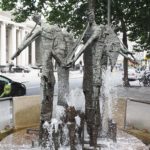
Thomas Davis Monument, College Green
Outside, on College Green, four magnificent jagged angels distracted us, blowing their trumpets to awaken the four provinces of Ireland. Here our history failed us as it did as we looked at the harrowing scenes round the base of their fountain. Later we stared from under our dripping umbrellas at the more celebrated statues of O’Connell Street, but it was the Angel Fountain we found more thought-provoking. As the rain got heavier, we considered asking two people with bulging plastic bags labelled “Chapters”, where to find that second-hand book paradise; but as they disappeared over the Ha’penny Bridge, we realise that we were by the equally tempting-sounding Winding Stair Bookshop. Bagging our purchases, the friendly assistant directed us to her much larger rival, Chapters, a route incorporating market stalls and street art like the butcher’s mosaic animal heads. Clutching our own Chapters’ bulging bag (old children’s books for Helen’s collection), we subsided into Smokin’ Bones with its generous portions of deep south (American) BBQ food.

8C crucifixion plaque from Rinnegan
Memories of Victorian railway stations surfaced next morning as we gazed up at the great hall roof structure, but railway stations were not filled with gold torcs and gold ear boxes and did not have such magnificent marble fireplaces as Dublin’s National Museum of Archaeology. We lingered over Celtic and early Christian artefacts from sites we planned to visit and the bog bodies in the Kingship and Sacrifice section (rivals of the Danish ones we saw last year). An equally intriguing bog find was the 8th or 9th century Fadden More psalter, somewhat the worse for its long immersion. All too soon a voice boomed out a 5 o’clock closing time warning and a whole day had vanished. That evening the sun came out, so we strolled along the quiet park-lined street by our hotel, stopping at a Thai restaurant and take-away which dished up the best evening meal of the holiday!
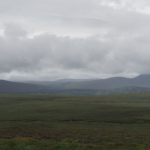
Wicklow mountains
The next morning the clammy clouds lifted above the old Military Road, revealing the scalloped dark Wicklow mountains. Thoughtful sheep, rather than British soldiers repelling Irish rebels and French invaders, now patrolled the narrow road, cyclists in Tour-de-France-like gear glided downhill, occasional foreign cars acknowledged each other with hoots as they edged past (it must be the locals who whizzed by) and a waterfall cascaded as waterfalls do.
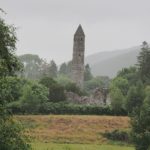
Glendalough round tower
Sadly, the famous sixth century monastic site of St Kevin at Glendalough seems to be run at present on the principle of revealing as little information as possible once the tourist has paid a hefty charge for the huge, packed car-park. No portable maps of the site were offered and few buildings were labelled. Apparently the present incumbent does not believe in defacing buildings with signs – apart, that is, from the ones telling you not to deface historic buildings.
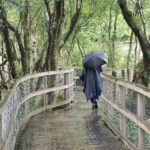
Glendalough walkway in the rain
The rain was heavy once again as we perused the nearest unlabelled ruins, which included a round tower (where the monks could watch for enemies, retreat and protect precious books and manuscripts) and a cathedral. Protected by dripping rain capes and umbrellas, we took the board walk across boggy ground to the Upper Lake. Fortunately the Wicklow Nature Park office at the end of the lake was more helpful to drenched walkers about the location of the more distant chapels. “You’re welcome”. We drove on to our large, impersonal hotel in Kilkenny via a ruined abbey (Baltinglass), the first of many dimly lit chocolate-coloured lounge bars (warming drinks including hot chocolate with marshmallows), and a large dolmen (Brownshill).
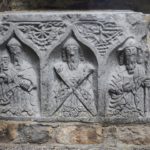
Jerpoint Abbey tomb
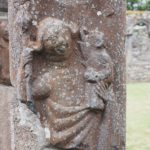
Jerpoint Abbey cloisters
By contrast, our Jerpoint Abbey day was to prove the most memorable and enchanting. Despite all preconceptions, the sun shone, the car park at the ruined Cistercian Abbey was tiny, the reception area contained useful booklets and a fascinating exhibition of other local archaeological sites (none of which were in our Dorling Kindersley guide book) and the friendly and informative staff even produced hand-drawn maps on how to find them. So after a pleasant couple of hours wandering round Jerpoint Abbey itself, with John photographing all the quirky capitals and carvings of the cloisters and our marvelling at the relapse from austerity of the Cistercians into what they usually condemned as superfluous ornamentation, we set out to find the other sites,
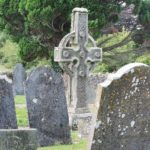
Ahenny – High Cross
First the twelfth century Aghaviller Church and Round Tower, and then the tiny village of Ahenny with its brightly painted cottage doors and chugging tractors and haywains. A miaowing tabby guarded the kissing gate into a field of grazing cows (her message was probably “You’re welcome!”) in the middle of which was an enclosed graveyard containing two beautifully carved High Crosses with intricate Celtic patterns. Our first High Crosses were more far striking than pictures or imagination had suggested.

Knockroe Neolithic passage tomb
After this feast for the eyes, we had to interrupt two men leaning on a gate and putting the world to rights for directions to the Knockroe passage tombs; down a cart track, in an enclosure surrounded by cows noisily pulling up grass and lapping water, the old stones stood, silent testaments to long forgotten lives. On the other side of the hand-drawn map, on a lonely road in the shadow of the Blackstairs mountains, we found the ruins of Ullard church with its Romanesque doorway and worn High Cross. Inside the ruins stood more recent upright grave stones, which we were to see filling many more of the beautiful mediaeval buildings condemned to ruin after Henry VIII’s dissolution of the monasteries. Round it were more cows, this time lying disconsolately on the bare black earth of a recently ploughed field. Our day’s unexpected tour ended at the church in Gowran and we dined on fish and chips back in Kilkenny.

12C Athassel Priory

Swiss Cottage, Cahir
Different histories emerged next day in Cahir with its Anglo-Norman castle, and picturesque John Nash-designed Swiss Cottage which was the day-time play house or cottage orné for the local Butler family to which they brought their guests to frolic and be bucolic; unfortunately, after it was built in 1810, neighbouring cottagers had to be thrown off their properties which marred the view from the windows to the main Butler residence, Cahir Castle. We spotted the ruined Augustinian Priory of Athassel from a country lane near Golden, but missed the discreet stone stile giving access. This time we were helped by a schoolboy on a bike and turned back, parked where a farm track emerged and walked across the cowpat-dotted field and old stone bridge. Gravestones stood like a frozen congregation listening attentively in the nave. Like yesterday, the site was deserted, apart from us and the cows.
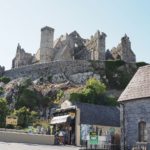
Rock of Cashel
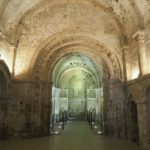
Cormac’s Chapel
The cathedral ruins on the Rock of Cashel which we visited in the early evening was much busier, and we returned to the Rock the following morning (after an excellent breakfast at our gracious Georgian hotel) for a guided tour of Cormac’s Chapel with its carved heads, elaborate arches and fresco fragments. We were not doing too well at finding good Irish food at dinner time; that night’s fare was Indian.
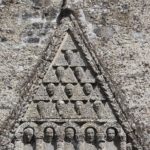
Tympanum of Clonfert Cathedral
After Cormac’s Chapel, the rest of day six was disappointing, ending up in Banagher where our B&B hostess was absent at the local fair, our bedroom bare apart from the bed and a shower and the breakfast the next morning dismal. However, we escaped to the tiny Clonfert cathedral with its intricate tympanum and chancel arch with randomly placed angels and mermaid, and then to the tavern in Shannonbridge, with its three drunken men shouting and quaffing at the bar and four well-dressed tea-drinkers on their way home from the Galway races, pouring tea from a pretty flowered teapot into pretty flowered mugs from the local pottery. Apparently Barrack Obama was presented with one of the pottery’s teapots when he visited in 2011, and earlier we’d seen roadside signs commemorating his visit (recalling Obama’s comment when he heard the news of his Irish ancestry during his campaign to secure the Democratic nomination for US president, “why didn’t anyone discover this when I was running for office in Chicago?” and his joke when he arrived in Ireland “And I’ve come home to find the apostrophe that we lost somewhere along the way.”) And J.J. Kileen’s standard pub-grub (do fish and chips and chicken goujons and chips qualify as traditional Irish cuisine?) is well-cooked.

Shannonbridge fort
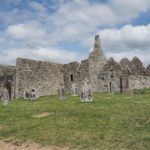
Clonmacnoise
We returned to investigate the fort at Shannonbridge the following morning. It was built by the British to repel any invasion from the west coast by Napoleon attempting to take Dublin. But Napoleon never came, later claiming that if Ireland had sent him honest men he would have made an attempt on the country, but he had no confidence in the integrity or talents of the Irish leaders in Paris who could offer no plan, were divided in opinion and constantly quarrelled. After drinking coffee at the fort and buying some of the pottery we (and possibly Obama) had admired from two doddery gentlemen at J.J. Kileen’s shop, we explored Clonmacnoise with its three beautiful High Crosses and grave-slab inscriptions (now protected indoors with plenty of information panels), two round towers, cathedral and churches; we walked up a narrow, sunny lane, which was buzzing with sleepy flies, to the Nuns’ church with its Romanesque doorway.
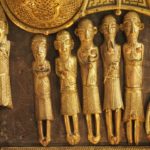
St Machan’s shrine
Before leaving, we studied their map of local places of interest, marked them roughly on one of our maps, then drove on to find the Clonfinlough Stone, a randomly carved glacial boulder on a hillside, followed by the church at Bohrer which now houses the beautiful twelfth century St Manchan’s shrine, a gilded yew box decorated with carved figures which look almost African. In case you too are ignorant about St Manchan, he was a monk from Clonmacnoise who founded a monastic site in Lemangham, whose ruins we visited later, after we’d walked round a modern wooden walkway across the Clara bog. His church would have originally been on a natural dry island surrounded by bogs, and could have been used by pilgrims on their way to Clonmacnoise.

Irish breakfast
That night we stayed in the lavishly furnished bungalow of a Mary Berry look-alike and her husband on the outskirts of Athlone. And, like Mary Berry, our hostess provided an exceptional breakfast the following morning, fresh fruit salad, muesli, thick yoghurt, a full Irish with black and spicy white puddings for John and scrambled egg and black pudding for Helen, Gubeen cheese from Cork, home-baked breads and drop scones, syrup and home-made jams. Her husband, who serves her breakfasts, said that after forty years they plan to retire from their guest house and bakery in 2019 and spend more time visiting Italy, which they love.
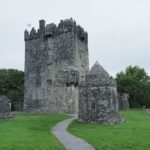
Aughnanure Castle
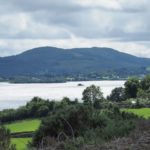
Lough Corrib
The exceptionally good breakfast was followed by a wet walk round Galway, and a pretty drive up the west side of Lough Corrib. On the spur of the moment we turned off to Aughnanure Castle, a tower house built around 1500 by the “wild” O’Flahertys, the masters of West Connaught from Lake Corrib to the sea. As we later rounded the northern end of the lough, the sun appeared from behind banked clouds, turning the lough bright blue. Against the bright blue, the high crimson fuchsia bushes which bordered the narrow road and the orange spiky-leaved plants looked flamboyant. Reaching Cong, we walked round the early twelfth century Cong Abbey (Augustinian), which seemed plain compared to the Cistercian monasteries we had admired, but the monks’ fishing house built out over the river struck a practical note with its fireplace for cold days.
A friendly man at reception welcomed us to Ryan’s hotel on Cong’s main street which we chose in preference to Ashford Castle which charges a mere 625 euros a night for its cheapest room. He carried a case up the narrow stairs to our airy room and suggested we started our enquiries about the alleged murder in 1852 of local land agent St George Cromie (an entry from 1900 in the Oxford DNB), in the little bookshop that was part of the hotel. The same busy man later also rushed round helping to serve the large number of people dining in the hotel bar that evening. But despite his zealousness, though obviously not the chef’s, something John ate there (possibly unwashed salad) upset his stomach, so our continued search next day, on behalf of our friend Sue, into Cromie’s mysterious, undocumented death, was punctuated by frequent dashes to a loo or bush. Alas, our quest in the abandoned graveyards of Cromie’s father’s parishes, at the Ballinrobe family history society and through the newspaper reports in Castlebar local history library was fruitless, and the former Church of Ireland in Ballinrobe, which has been turned into a library, did not open at the hours stated on the library board.
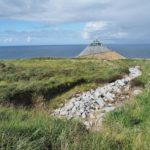
Céide Fields
Probably no one cares these days what happened to some unwelcome Protestant gentry. So we changed focus and century and drove on to the coast to visit Céide Fields, the oldest known neolithic field system whose walls have been preserved under layers of peat along with remains of houses and tombs. There were plenty of well-illustrated information panels and a knowledgeable assistant in the distinctive glass pyramid centre at the entrance to the wind-swept peaty hillside and excavations above the sea (and warming drinks after).
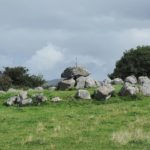
A Carrowmore megalithic tomb
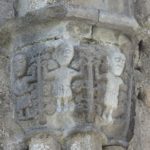
Boyle Abbey
The neolithic theme continued next morning after a night in Ballina, when we decided to visit the surprisingly extensive Carrowmore Megalithic Cemetery outside Sligo. Forty passage tombs and dolmens and a cairn remain, despite quarrying in the area and local re-use of stones. The views all round, when not dark with storm clouds, were magnificent, and there was mention of more cairns and dolmens on surrounding hillsides. Our next site, the Cistercian Abbey (1161) of Boyle seemed quite recent after that.
Our last three nights were spent at a B&B outside Kells, where our host was a sprightly former jockey and trainer turned mental health worker. He was at a funeral when we arrived, so first appeared in a black suit, but later seemed more comfortable sporting a cowboy hat. After a cramped first night in a small room with no surfaces (even for a toothbrush mug), no hooks to hang towels, or space to open a suitcase, he agreed to move us down the corridor to a more spacious room and bathroom (but still only one bedside light). From his place we could explore the famous Newgrange stone age passage tomb site as well as the High Crosses of Monasterboice and the legendary Hill of Tara, and be close enough to Dublin (an hour’s drive) to catch our morning catamaran.
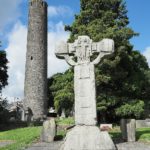
A Kells High Cross
Kells itself was interesting for more than its past ownership of the Book of Kells, and during the three days we saw its round tower, the High Crosses, the eleventh century oratory known as St Columcille’s House, and another small graveyard, St John’s, with the mediaeval tomb of “the Abbess” and war graves from 1915. Of its various eateries, we sampled the Khyber Pass (admiring their steam railway poster showing the last stop before the Afghan border where the boss’s family still live), a small Italian (with no wine licence or bank card machine), and the more up-market Headfort Hotel. The latter also displayed a colourful and intricate page of the town’s facsimile Book of Kells, but naturally the town would love to house the original and cater for all the tourists who would subsequently flock to Kells.

Knowth passage tomb
Helen had been dreading coach-loads of fellow tourists at Newgrange and Knowth, with its visitor centre organising the obligatory pre-booked buses and guides. But in fact the timed guided visits and different coloured tickets ensured that the 6000 year old passage tombs were not overcrowded or damaged. The busy receptionists and bus drivers were cheerful and chatty and the guides were very informative and happy to discuss solstice theories and even question the archaeologist’s speculative vertical wall re-facing of Newgrange with white quartz stones.

Newgrange passage tomb entrance
The roof box which directs the sun’s rays was intriguing, and it is hard to describe the emotion of stepping over the carved entrance stone, and walking, crouched, through the stones of the passageway into the dark heart of the Newgrange mound. Although visitors cannot go inside the mound at Knowth, the outside was fascinating with its wealth of carved and incised kerbstones and smaller encircling mounds. A very special atmosphere. And the guides commented there as elsewhere on the absence of the famous Irish rain.
After this, the legendary Hill of Tara was disappointing (and it was raining there). Children were climbing and playing games all over graves and mounds and the youthful guide provided an ill-digested mixture of fact and fiction, with nothing about the archaeological digs featured in the National Museum of Archaeology, but plenty about the excavation for the Ark of the Covenant carried out by the British Israelites (a sect, oddly enough, supported by Great Aunt Beatrice). They had failed to find it. When we walked on (without the guide) to the more distant mounds, including the Fort of Grainne, it was amusing to see the rabbits busy with their own archaeological digs.
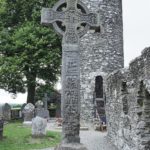
A Monasterboice high cross and tower
But Monasterboice was certainly not a disappointment. Founded in the fifth century by St Buite, an obscure disciple of St Patrick, it remained an important Christian settlement till the Cistercians built Mellifont Abbey. In the graveyard were two churches, a round tower to protect against Vikings attacks, a sundial, and the three most spectacular High Crosses of our trip, in particular Muiredach’s High Cross with its beautifully carved Bible scenes.
We prepared to leave Ireland, as charmed as the Vosgians. We had found the people welcoming and the historical sights fascinating. We had enjoyed the famous Irish breakfasts, though not sampled much traditional fare in the evenings. And although we had seen the renowned green landscape through rain and mist at the start, equally memorable landscape colours, thanks to the sunshine, were the rich black peat, blue loughs, and crimson and orange flowers. And the catamaran to Holyhead? Back in Kells John received a message that the departure of the 8.30am catamaran had been brought forward to 7.45am (due to adverse weather for the return crossing?), so we crept out at 5.15 to drive to Dublin, boarded the very crowded catamaran and queued for breakfast during the smooth crossing.
Meanwhile the house in Entre-deux-Eaux had not stood empty as Toby and family took a last-minute holiday there. While we had been enjoying Ireland’s cooler, though mainly sunny, weather, it was very hot in E2E. Perhaps it is just as well we didn’t ask them to check our post as an official letter arrived from the Mairie announcing water restrictions, including the filling of pools; so they constructed and filled our patio pool in ignorance and everyone spent quite a lot of time splashing around between expeditions to favourite sites (like the wheeled sledge runs). Despite the heat they had some good walks, including a climb above Lac Blanc. Their dog Teddy also seemed to enjoy all the open fields and walks, the only problem arising when they took him to the vet the day before their return for his statutory worming treatment and were told his rabies injection had expired; so poor Teddy ended his holiday with three weeks in kennels in Calais waiting for his rabies jab to take effect.
Back in Letchworth, we exchanged memories of E2E and Ireland with them and played plenty of games with Jacob and Farrah. Leila joined us for the last couple of days there and then the three of us set out for E2E, where the weather was still very hot, especially on the plains of Alsace, as we realised when we went on a hunt for Alsace red-and-white table linen or half curtains. In the opposite direction, the Imprimerie restaurant in the book village produced a lovely surprise lunch menu for us, which accommodated Leila’s dislike of mushrooms, courgettes, aubergines and fruit that’s not red or purple. As ever, Leila was successful in getting bargains at a flea market, this time in the small village of La Bourgonce where she bought (from different stalls) four brightly coloured Moroccan plates for five euros.
Soon after her visit our neighbours, the Georgeons, celebrated their 50th wedding anniversary with their family. The Deux Frères restaurant (very popular with lorry drivers) provided the evening meal in the village hall, and we provided accommodation for five of their guests in the farmhouse. We had warned them in advance that the old front door key turned the “wrong” way, the beds had English pillows (different shape from French) and that the stairs were dangerously steep. But the caveats got forgotten in their hectic preparations. We ended up greeting the guests as they couldn’t get in, and we had left out spare bed linen in case theirs didn’t fit. But what we didn’t see was the guests’ return from the celebrations around 1am, when an elderly husband had to have two people pushing him upstairs from behind and one hauling in front (or so our neighbours later reported, making drinking hand gestures implying over-indulgence). Unfortunately the bathroom is downstairs, so we’re not sure how he managed after that! We had meantime been entertaining Roger and Dorinda to dinner on their return for a week to the Vosges.

“tattered splendour” patchwork
They did not need any such help returning to their old house, now a gîte, at the end of a pleasant evening. Later in the week Helen met up with them for coffee in Sainte-Marie-aux-Mines during the international patchwork festival (having particularly enjoyed the small “tattered splendour” exhibition of elaborate dresses and jackets made from old pieces of patchwork, and the tasteful Japanese quilts). And also later in the week, the Georgeons rang our doorbell and presented us with a freshly laundered pile of bed-linen, a boxful of Alsace crémant and white wine and a box of chocolates from the small Chocolaterie Thil in the next village. Delicious! And we were relieved that their guests had just missed the annual invasion of cluster flies which, by the end of that week, were curtaining the farmhouse windows and door on the east side of the house, buzzing loudly, in a mass too dense to swat. A lot of fly spray and piles of corpses.
As well as the Patchwork there have been other annual September events, like the huge braderie in Saint Dié (but no interesting purchases this year), the re-union over games, cakes and champagne of the E2E oldies, and medical check-ups in Strasbourg. The Civil Hospital there does not seem to be favoured by people we know, who prefer Strasbourg’s private hospitals to the public one with its riff-raff clients and ever changing staff. But we riff-raff English are more accustomed than the French to seeing a different doctor each time, and have been happy with the dermatology department there. This time, however, the department (a shabby older building, surrounded by sparkling new blocks) seemed deserted apart from an intern holding the fort on the top floor. Was it a staff jolly (or training day) we wondered. As we were seen without delay, there was plenty of time before the afternoon appointment – in the “newer” part of town on the Avenue de la Paix, among the late nineteenth century villas, the leafy Parc du Contades and the post-war Grande Synagogue. We found a parking spot close to the soldiers with guns guarding the synagogue and crossed to our favourite Café de la Paix – Chez Sam for a coffee and tasty slice of vegetable pizza. Fortified, we looked round the exhibition in the nearby University Library building about the May ’68 student protests in which the Strasbourg students declared their university autonomous. Then Helen’s ophthalmology check-up was as rapid as the morning dermatology one, with no discernible deterioration. So we drove out of town to see Marie-Laure and Christian in Wolfisheim, who we had first met when Helen was researching “Footprints”. They had just returned from a relaxing short holiday among the storks of Munster, and the previous day Christian had been showing people round Fort Bismark (adjacent to their garden) on Heritage Day. We sat with them on their shady balcony overlooking the trees round the fort, and caught up on each others’ news and Brexit over cold drinks and chocolate gateau.
And then it was back to E2E for the remaining autumn tasks of collecting, shelling and freezing walnuts (a very good year), picking, puréeing and freezing Bramley apples, gathering and composting other windfalls with layers of silt (which has been blocking the front drainage channel) and Jerusalem artichoke stalks (which have blown down in recent high winds). And with the freezers nearly full, autumn raspberries consumed, and marrows, squash and small onions (a bad year for them) stored in the barns, our thoughts are turning to the UK and our return at the end of next week. Helen will be meeting up with the train gang in Chester, then joining John in Wales and Hay-on-Wye, and we hope to see plenty of Jacob during his half-term (which once again does not coincide with Farrah’s). We have quite a lot planned but will be delighted to see anyone passing near Letchworth.

